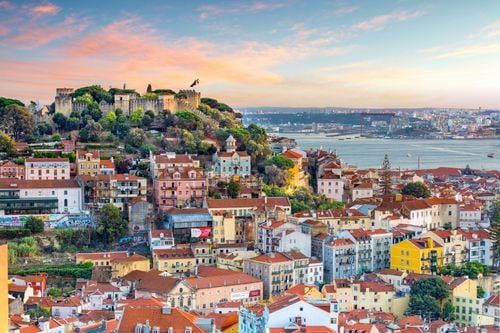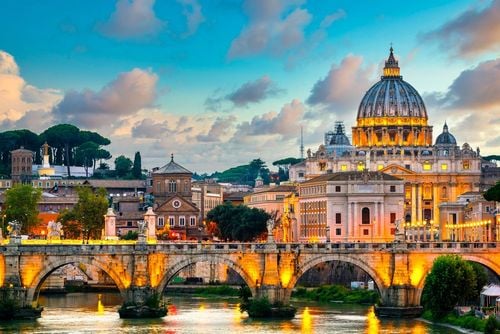THE seaside spot in the Dominican Republic


THE seaside spot in the Dominican Republic
Between the Caribbean Sea and the Atlantic Ocean, Punta Cana is the most famous seaside resort in the Dominican Republic. And with good reason... Its marvellous beaches of soft, fine white sand fringed by coconut palms and crystal-clear water stretch for more than 40 kilometres, from Uvero Alto in the north to Juanillo (Cap Cana) in the south, via Macao, Arena Gorda, Bavaro (the best-known and longest, where most of the resorts are concentrated) and Cabeza de Toro.
Transparent water, coconut palms, white sand... the magic cocktail for an excellent, relaxing holiday, not forgetting the inevitable mojitos and piña coladas in the shade of a cana hut!
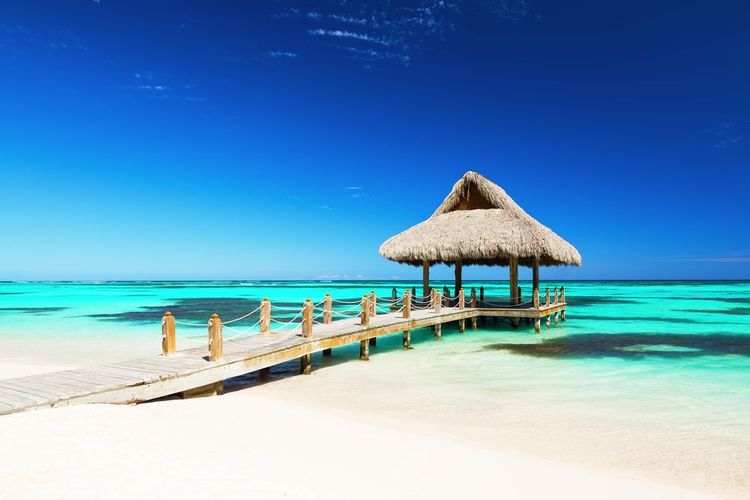
Punta Cana's beaches are sublime.
- © Preto Perola / ShutterstockPunta Cana does not exude authenticity. You can't really experience Dominican life here unless you go on an excursion. And excursions take time, as the area is far from everything. On the other hand, if you're looking for idleness, heavenly beaches and superb, superbly-equipped resorts that are cheap and all-inclusive, go for it!
The hotels offer a wide range ofsporting (and non-sporting)activities, from deep-sea fishing to horseback riding on the beach and helicopter flights over the coast. Golf enthusiasts will find seven attractive courses. And there's no shortage of water sports! Visitors can try their hand at scuba diving, water skiing, windsurfing, kitesurfing and parasailing. Jet-skiing, however, is now banned.
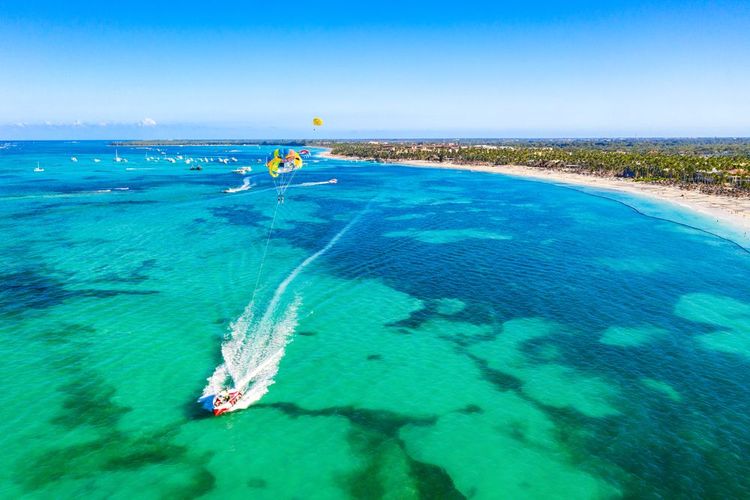
Parasailing in Punta Cana.
- © Nick N A / ShutterstockThe Punta Cana region offers a number of water parks, including the Marinarium, a 40,000 square metre natural aquarium. Children aged 5 and over can swim with a dolphin at Dolphin Island Park, an offshore water park where you can also admire sea lions, manta rays and cat sharks up close.
Other places to swim with dolphins are Dolphin Discovery and Manati Park. You can even walk under the sea in a diving suit at the Punta Cana Seaquarium! For thrill-seekers, you can also swim with a shark at Dolphin Explorer, in a fenced-off marine park off Cabeza de Toro beach.
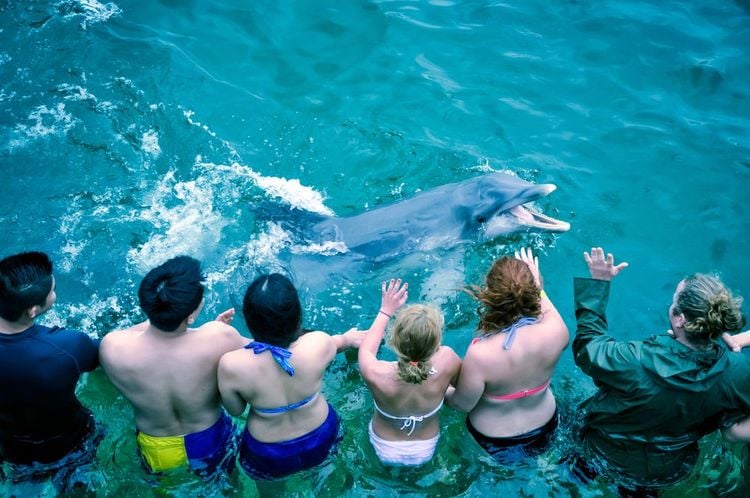
You can swim with dolphins in Punta Cana.
- © Lester Balajadia / ShutterstockFinally, budding adventurers can let off steam at Bavaro Park Adventure, with a flight simulator, horseback riding, swimming in an artificial lagoon with a beautiful waterfall, life-size dinosaurs, segway rides, paintball and even a zip line.
In the evening, there are two must-sees for party-goers: Imagine Punta Cana, a disco in a cave, and the Coco Bongo show.

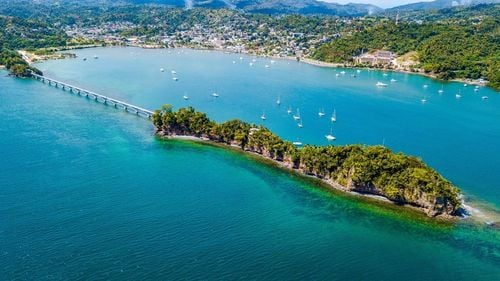
Punta Cana is a 9-hour flight from Paris. Its airport is located to the south of the area, between the Cap Cana marina and the Bavaro and Cabeza de Toro lagoons. If you are staying in hotels in these two areas, around 15 km from the airport, the transfer is very quick (10 to 20 minutes). A little longer for Bavaro beach (20 to 25 minutes), 30 minutes for Arena Gorda, and almost 45 minutes for the beaches in the northern zone (Macao and Uvero Alto). Most hotels have their own shuttle service.
The Punta Cana area accounts for 70% of the country's hotels! The all-inclusive formula is the most widespread in these gigantic resorts, which are generally top-of-the-range. This is the realm of families, with superbly well-equipped children's clubs, and some resorts even boast a water park. There are, however, several establishments reserved for adults. The good thing about Punta Cana is that the buildings are no higher than the coconut palms.
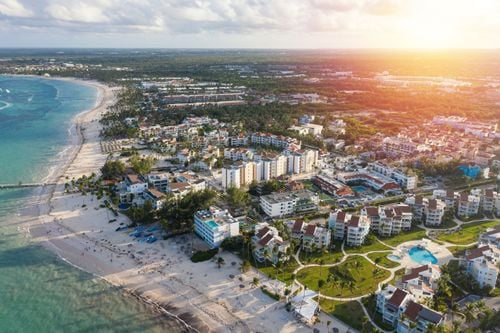
To travel to Punta Cana, and more generally to the Dominican Republic, British residents must present a valid passport.
The dry season, from November to April, corresponds to the high season: there are more people and prices are higher. During the wet season, from May to October, heavy rains are frequent, but they are brief and generally at the end of the day, so they are not really a problem. The cyclone season runs from June to November. In the low season, from mid-April to mid-December, you can take advantage of low hotel rates. Air fares are also lower and there are fewer tourists on the beaches.
Spanish is the official language of the Dominican Republic, but in Punta Cana you'll have no trouble finding people who speak English and French.
The currency is the Dominican peso (RDS). ATMs can be found in the reception areas of major hotels. Most of the time, you can pay in US dollars, and sometimes in euros in European hotel chains. Credit and debit cards are generally accepted.
Please note that prices in restaurants, bars and hotels do not include VAT. You will need to add 16% tax to which it is a good idea to add a 5-10% tip.
The destination is supplied with 110 volts (American standard), so you will need an adapter and a voltage converter to use French electrical appliances. However, most hotels will be able to lend you one.
No vaccinations are required, but a D-T-Polio update is recommended, as is anti-malarial treatment. Always drink bottled water and avoid raw vegetables and milk. Beware of the temperature shock between 30°C outside and 15°C in air-conditioned rooms, bars and restaurants.
The good news about Covid-19 is that you don't have to do a thing! Since 23 April 2022, travellers no longer need to present a COVID-19 vaccination card or a PCR or antigenic test to enter the Dominican Republic. Instead, you will need to fill in a form generating a QR code for entering and leaving the Dominican Republic:https: //eticket.migracion.gob.do/
Beware: possession of drugs is severely punished in the Dominican Republic. On its travel advice website, the Ministry of Foreign Affairs strongly recommends that travellers check the contents of their luggage before checking in at the airport on departure from the Dominican Republic. Prohibited substances may be placed in their luggage without their knowledge, particularly if it has been left unattended.
The locals have understood that tourism can bring them a lot, and crime rarely affects holidaymakers. As everywhere else, however, be vigilant and keep an eye on your belongings.
Rich and spicy, Dominican cuisine is the product of Creole, European and African influences. Starchy foods (rice, sweet potatoes, plantains), fish and shellfish, and tropical fruits are the staples. Grouper is often cooked with coconut milk or a green sauce (coriander, parsley, garlic and olive oil). You're also sure to try lobster. The typical dish, bandera, consists of white rice, broad beans, red beans and stewed meat, accompanied by salad and fried plantains.
Rum remains the most popular spirit, served neat (the oldest) or in cocktails. Three brands share the market: Brugal (the best known), Barcelo (the most popular) and Bermudez (rarer). There are two brands of beer in the Dominican Republic: Brahma and Présidente (the best!). And don't forget to try Mamajuana, the local rum concoction made from rum, honey and wine!
You'll find everything in the Palma Real Shopping Village: jewellery made from amber (a solidified brown resin) or larimar (a bluish stone endemic to the island), leather goods, merengue and bachata CDs, liquid vanilla, jam, Brugal rum, Mamajuana and coffee. You can also find them on the beaches and in the local markets. And don't forget that the Dominican Republic is the world's leading producer and exporter of cigars!
In March and April, many young Americans come to Dominican Republic resorts to celebrate the end of their studies. These are the famous Spring Breakers, and you can be sure that the atmosphere won't be the quietest!
explore Try out our comparators
It is Easy to travel

